Caring for Your Braces
Now that you have your braces, how do you take care of them? Maintaining your braces is crucial for your orthodontic journey with us at Brodsky Orthodontics.
Eating With Braces
Embracing your journey to a perfect smile with braces means adapting your diet for a while. But don't worry, your favorite popcorn and potato chips will be back on the menu soon! In the meantime, it's essential to avoid foods that could harm your braces.

Enjoyable foods with Braces
Indulge in soft and easy-to-chew foods such as dairy products like soft cheese and pudding, breads like soft tortillas and muffins without nuts, grains like pasta and soft cooked rice. You can also enjoy soft cooked chicken, meatballs, lunch meats, seafood like tuna and salmon, and vegetables like mashed potatoes and steamed spinach. Fruits like applesauce and bananas, and treats like ice cream without nuts, milkshakes, Jell-O, and soft cake are also braces-friendly.
Foods to Sidestep with Braces
It's best to avoid chewy foods like bagels and licorice, crunchy foods like popcorn and chips, sticky foods like caramel candies and gum, and hard foods like nuts and hard candies. Also, steer clear of foods that require biting into, like corn on the cob, apples, and carrots.
Remember, these dietary adjustments are temporary but crucial for the success of your orthodontic treatment with us at Brodsky Orthodontics.
Loose Wires & Bands
Experiencing a loose wire or band during your orthodontic journey is not uncommon, so there's no need for alarm. If a wire is protruding and causing discomfort, you can carefully use a blunt instrument, like the back of a spoon or the eraser end of a pencil, to gently push the wire away from the irritated area.
Should the irritation persist, applying wax or wet cotton on the wire can provide relief. However, it's important to contact our office at Brodsky Orthodontics as soon as possible to schedule an appointment for appliance check and repair. If any part of your braces comes off, please save it and bring it with you to your appointment.
Loose Teeth
Experiencing a sensation of loose teeth during your orthodontic journey is perfectly normal, so there's no need for concern. Your braces are designed to first loosen your teeth slightly to facilitate their movement into the correct position. Once your teeth have been successfully repositioned, the looseness will cease.
Remember, this is a standard part of the process towards achieving your perfect smile with us at Brodsky Orthodontics. We're here to guide you every step of the way, ensuring your journey is as comfortable and successful as possible.
Soreness from Braces and Appliances
Embarking on your journey to a perfect smile with braces may come with some initial discomfort. After your braces are fitted, it's normal to experience general mouth soreness and tender teeth for three to five days. If the tenderness is intense, consider taking ibuprofen or your usual pain reliever for headaches or similar discomfort.
As your mouth adjusts to the new appliances, your lips, cheeks, and tongue may feel irritated for one to two weeks. This is part of the process as these areas toughen up and get used to the braces' surface. You might also notice some canker sores or blisters during this period.
To alleviate the discomfort, dental wax can be a great help. Rinsing your mouth with a warm saltwater mouthwash can also provide relief. Simply dissolve one teaspoon of salt in 8 ounces of warm water and rinse your mouth vigorously.
Remember, these initial discomforts are temporary and a normal part of the orthodontic journey. At Brodsky Orthodontics, we're here to ensure your journey to a perfect smile is as comfortable as possible.
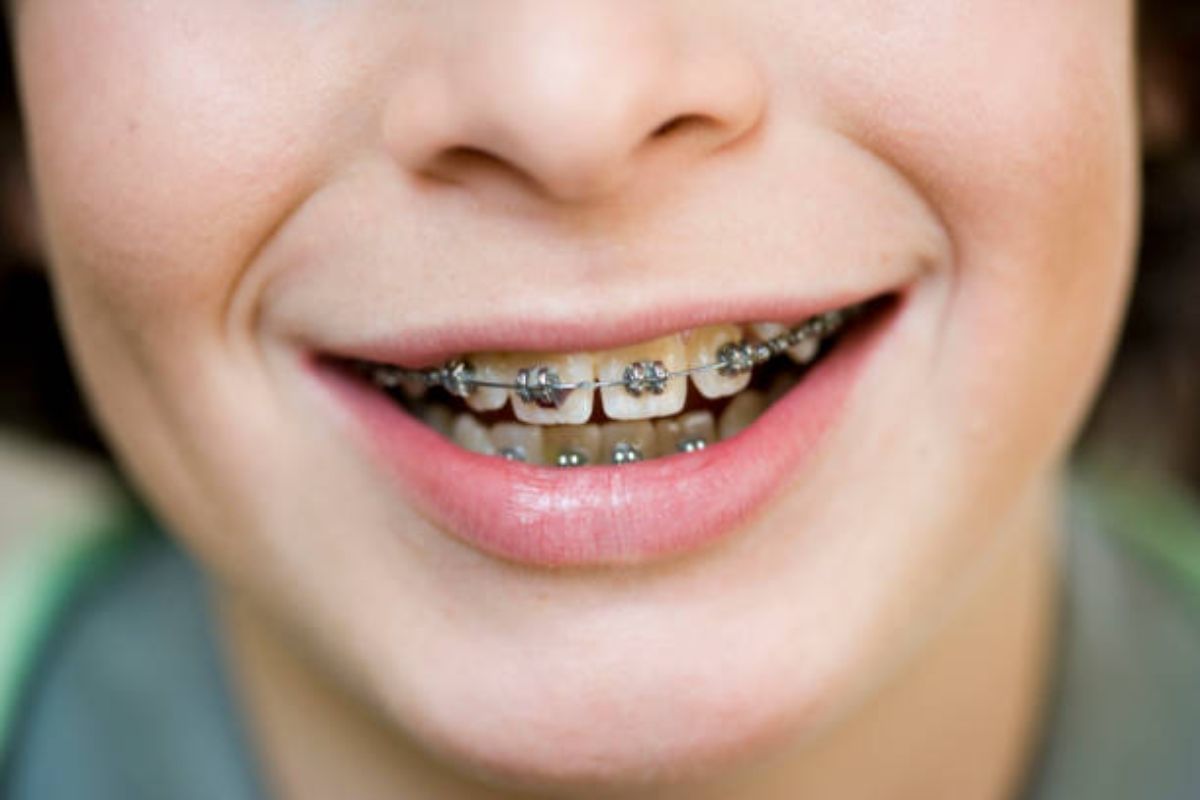
Brushing
Maintaining good oral hygiene is crucial, especially when you're undergoing orthodontic treatment. Regular brushing and flossing ensure that your teeth and gums remain healthy throughout your treatment and beyond.
When you begin your journey with us at Brodsky Orthodontics, we'll guide you through the correct brushing and flossing techniques to maintain a healthy and radiant smile. Poor oral hygiene during orthodontic treatment can lead to complications such as cavities, decalcification of enamel (resulting in "white spots"), and gingivitis or periodontitis (gum disease).
For patients who find it challenging to maintain good oral hygiene, more frequent visits to the dentist for professional cleanings may be necessary. Additionally, adults with a history of gum disease should be monitored by a periodontist during their orthodontic treatment.
Remember, your journey to a perfect smile is a team effort. We're here to guide and support you every step of the way.
Playing Sports With Braces
Embracing an active lifestyle and participating in sports is entirely feasible, even with braces, as long as you take the necessary precautions. One such precaution is the use of a mouthguard. A sudden impact to the mouth during sports can be quite painful when you're wearing braces. A mouthguard can help shield your lips and cheeks from such trauma. At Brodsky Orthodontics, we offer Sisu mouthguards, available for purchase at our front desk. We also have a helpful video that demonstrates the best way to fit it.
If you have any queries about the mouthguard you're currently using, or if you need a new one, don't hesitate to ask us. We're here to ensure your orthodontic journey complements your active lifestyle, not hinder it.
Brushing Instructions
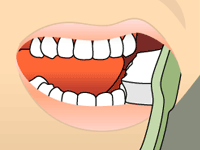
Brushing Step 1:
Place your toothbrush at a 45-degree angle to your gum.

Brushing Step 2:
Brush gently in a circular motion.
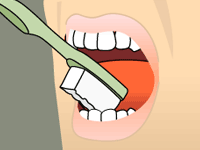
Brushing Step 3:
Brush the outer, inner, and chewing surfaces of each tooth.
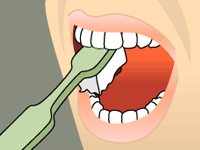
Brushing Step 4:
Use the tip of your brush for the inner surface of your front teeth.
Flossing Instructions
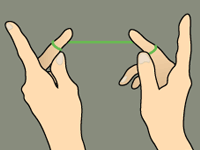
Flossing: Step 1
Wind about 18 inches of floss around your fingers as shown.
Most of it should be wrapped around one finger, and as the floss is used, the other finger takes it up.
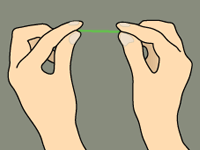
Flossing: Step 2
Use your thumbs and forefingers to guide about one inch of floss between your teeth.
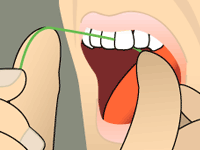
Flossing: Step 3
Holding the floss tightly, gently saw the floss between your teeth.
Then, curve the floss into a C-shape against one tooth and gently side it beneath your gums.
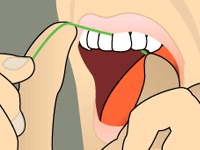
Flossing: Step 4
Slide the floss up and down, repeating for each tooth.